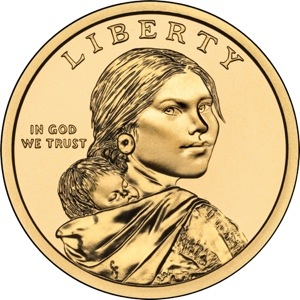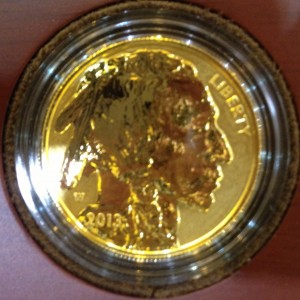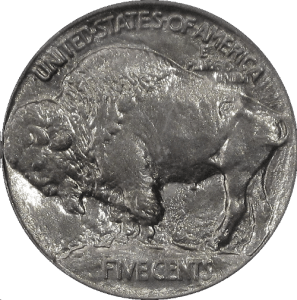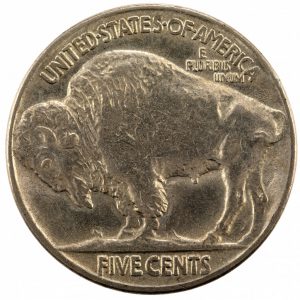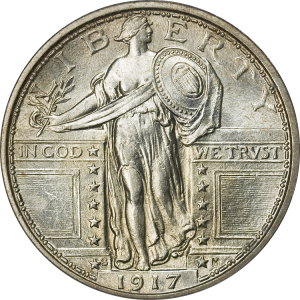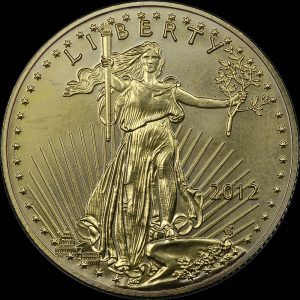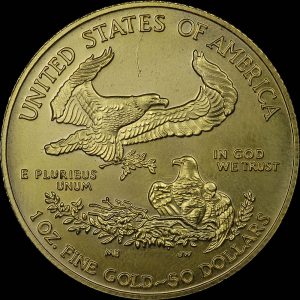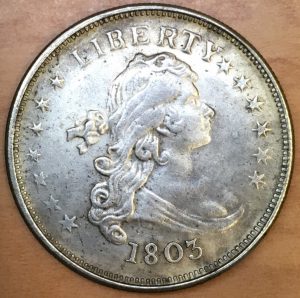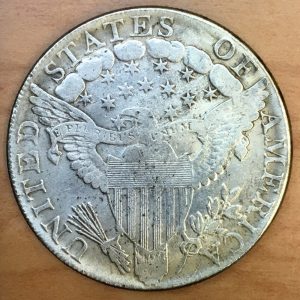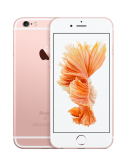Why is the U.S. Mint Limiting the Morgan and Peace Dollars?
Without announcement or other fanfare, the U.S. Mint added 2021 Morgan and Peace Dollars to the Product Schedule on the catalog website. The entries linked to their product pages where they buried critical details about the releases.
The pages noted a household limit of 25 coins. When collectors found out and complained, the U.S. Mint lowered the limit to 10 while claiming they are listening to their customers. The household limit is a controversy because of the low product limits placed by the U.S. Mint. Each of the 2021 Morgan Dollar options is limited to 175,000 coins, and the only Peace Dollar option is limited to 200,000 coins.
Why are the product limits so low?
It does not take a degree in marketing to read the numismatic media to understand that there will be a demand for these coins. The ANA pursued passage of this legislation beginning in 2019. Collectors in numismatic forums have discussed the coins. Yet, the U.S. Mint claiming that they are listening to their customers is tone-deaf when it comes to production to satisfy the market.
When a government agency has to do something not exactly the way the public expects, the agency will go about its business trying to generate as little publicity as possible. The U.S. Mint has tried to hide the low product limits and its callous disregard to the collecting community they claim to hear by ignoring the extreme demand these coins will have.
A government agency is supposed to serve the public. If the U.S. Mint is really listening, they will increase the product limits. Otherwise, this is David Ryder playing games at the collector’s expense and should resign as Director of the U.S. Mint.
- CC Privy Mark for the 2021 Morgan Dollar
- O Privy Mark for the 2021 Morgan Dollar
- 2021 Peace Silver Dollar
| Denomination: | $1 |
| Finish: | Uncirculated |
| Composition: | .999 Silver |
| Silver Weight: | 0.858 troy oz. |
| Diameter: | 1.500 inches (38.10 mm) |
| Edge: | Reeded |
| Coin | Privy Mark | Release Date | Production Limit | Price |
|---|---|---|---|---|
| 2021 Morgan Dollar | “CC” | May 24, 2021 | 175,000 | $85.00 |
| 2021 Morgan Dollar | “O” | May 24, 2021 | 175,000 | $85.00 |
| 2021-D Morgan Dollar | June 1, 2021 | 175,000 | $85.00 | |
| 2021-S Morgan Dollar | June 1, 2021 | 175,000 | $85.00 | |
| 2021 Morgan Dollar | June 7, 2021 | 175,000 | $85.00 | |
| 2021 Peace Dollar | June 7, 2021 | 200,000 | $85.00 |
Sacagawea on the new $20 designs
I will go into the more details of the changes at a later date, but during my travels around the interwebs I came across a television news report from KIFI, the ABC affiliate in Fort Hall, Idaho. Although it is like every other news story it has one feature that no other news outlet was able to add to their story: an interview with Randy’L Teton.
Randy’L Teton is a member of the Shoshone-Cree tribe who was the model for Glenna Goodacre’s design for the Sacagawea dollar coin. Teton was a student at the University of New Mexico majoring in art history and was working for the Institute of American Indian Arts Museum in Santa Fe when Goodacre visited looking for Shoshone woman to be her model since no images of Sacagawea exist. Teton was chosen for as the model.
For anyone who has not seen or heard Ms. Teton, here is the video of KIFI’s report:
Bring back the Buffalo nickel?
If you missed the news, a few days ago President Barak Obama signed the National Bison Legacy Act (Pub. L. 114-152) that names the “North American Bison” the national mammal. The bison does not replace the Bald Eagle as the national animal or the national emblem.
The bison is an iconic animal unique to North America. Discovered by the European settlers as the country expanded west, the bison was significant to the economic and spiritual lives of the native tribes throughout the Great Plains areas.
Bison is important to the ecology of the landscapes where they are located. Bison eat a certain type of grasses that are said to be difficult to control. The bison act as a natural “ predator” and not only consumes these grasses but also helps maintain control over the vegetation through consumption and feeding what is left through their waste.Although conservation efforts began in the late 19th century, a bison population that used to number in the millions the 2012 Department of Agriculture census said that there were 162,110 heads. Up until the last 50 years, we have done a bad job of taking care of this national resource, now national treasure.
When numismatist thinks of the American Bison, the thought turns to the Indian Head “ Buffalo” Nickel designed by James Earle Fraser. Fraser, a student of Augustus Saint-Gaudens, continued the path of Theodore Roosevelt’s “pet crime” to design a coin that screams America.
The reverse of the coin is an American Bison that we erroneous call a buffalo. According to legend, Black Diamond was Fraser’s model for the reverse of the Buffalo nickel. Black Diamond was a North American bison that was living in the Central Park Zoo. He was donated to the zoo by Barnum and Bailey and lived his life there until he was auctioned in 1915 to a game and poultry dealer who was later sold as steaks for $2 a pound.
When asked about the model for the coin, Fraser said it was Black Diamond and found him in the Bronx Zoo. At one time Fraser was not sure of the name of the animal but insisted his influence was at the Bronx Zoo. Black Diamond was never at the Bronx Zoo. But like the story of who was the model for the Indian on the obverse, why should facts spoil a good story!
With the signing of the National Bison Legacy Act there are groups that wants to bring back the Buffalo nickel. Someone started a petition at the online petition website Change.org to convince the U.S. Mint to return to bring back the buffalo nickel.
Even though the U.S. Mint is the wrong agency to address this petition to since it would require an act of congress, the Fraser Buffalo design is still used on the 24-karat gold bullion coin. In fact, not counting varieties, mintmarks and strike types, the bison has appeared on eight different coins and one Legal Tender Note. If you want to put together a nice type set, it would require 22 different coins and the 1901 $10 Legal Tender Note (see “Collecting a Herd of Buffaloes” for this discussion).
I do not know if returning the Buffalo nickel is a good idea. While it was an iconic design, it was one that saw considerable wearing while in circulation. If someone wants to bring the buffalo back to United States coins, maybe we could consider the 2005 Westward Journey nickel with the American Bison reverse. It also has a better portrait of Thomas Jefferson than is currently used.
If you would like to virtually sign the partition, visit Change.org and register your vote.
The Washington Post produced an interesting video with facts about the bison. If you want to see the video without visiting the Post’s website, you can watch it here:
Even more dictionary updates
![]() Behind the scenes I am working on a few projects including the ability for collectors to have access to my dictionary wordlist where ever they are. I will have an announcement in a few weeks but in the mean time I am collecting reference information and finding words missing from my Numismatic Dictionary. After a while, I will reformat my list and add them.
Behind the scenes I am working on a few projects including the ability for collectors to have access to my dictionary wordlist where ever they are. I will have an announcement in a few weeks but in the mean time I am collecting reference information and finding words missing from my Numismatic Dictionary. After a while, I will reformat my list and add them.
Here is today’s list of new words:
My word of the day is exergue. An exergue is the area below the main design that is separated by a line and often bears the date. An example of an exergue would be on the reverse of the Buffalo nickel or the obverse of the Standing Liberty quarter. I forgot what I was reading when I came across the word discussing the differences in the Type 1 and Type 2 Buffalo nickels.
It is always good to learn something new!
If you think there is a mistake or a word has been left out please contact me and let me know. Thank you!
Counterfeiting of collector and circulating coins on the rise
Europe is experiencing a rise in counterfeiting circulating coins that governments are saying is causing additional damage to economies. Coins that are experiencing a rise in counterfeiting include the British one-pound coin that will be replaced in 2017, the Swiss 5 franc coin, and the 2-euro coin. While the source of the British counterfeits remain a mystery to law enforcement, reports suspect that Swiss and euro coins are being manufactured in Italy.
In the United States a new wave of collector coins and bullion have been seen in the market. The Professional Numismatic Guild is reporting that following a survey of its member dealers the number of counterfeit coins now on the market is on the risk. In addition to the counterfeit coins many are appearing in counterfeit grading service holders. While an experienced collector may be able to detect most counterfeit slabs, there have been novices who have been fooled by these fakes.
According to PNG, two members who recently were in Asia say they saw counterfeits of Draped Bust, Seated Liberty, Morgan and Peace silver dollars being sold in flea markets in China and Hong Kong for $1 to $3 each. Some are brought back to the United States where they are submitted to third-party grading services where they are returned as counterfeit.
Many of these counterfeit coins have flaws that someone with experience with these series would easily detect. PNG advises everyone that if you are not sure about the coin, collectors are advised to consult with a PNG dealer who can provide a proper analysis.
While I am not an expert in detecting counterfeit coins, one thing that I notice is that counterfeit modern coins always look too sharp. Their lines are very sharp giving the coins a nearly plastic look. The problem is that gold is a ductile, softer metal which lends to a rounder, more flowing designs when struck. Harder metals can be struck with very sharp edges.
For older coins, aside from design mistakes made by counterfeiters, these coins always have a mushy look to them. While worn coins do not have the struck look to them, they do not wear to where it appears that they were originally struck underwater.
If there are any questions about the authenticity of a coin, always consult a trusted dealer!
Here is the press release issued by PNG:
Use Caution To Avoid Gold And Silver Counterfeits,
Advises Professional Numismatists Guild
(Temecula, California) – Beware of counterfeit vintage rare coins and fake modern gold and silver bullion items now being offered in the marketplace. Purchase only from reputable dealers, cautions the Professional Numismatists Guild (www.PNGdealers.org).
The PNG is a nonprofit organization composed of many of the country’s top numismatic experts.
“It is clear there is an increase in the types of fakes sold by unscrupulous dealers. These sales of counterfeit coins are potentially a multi-million dollar problem for the public. There’s an old saying that can help buyers avoid problems: If you don’t know coins, you better know your dealer,” stated Professional Numismatists Guild (PNG) President Dana Samuelson.
“We conducted an informal inquiry of PNG members and PNG Accredited Precious Metals Dealers (APMD) about what they’re encountering now in the marketplace. They have seen everything from counterfeits of vintage rare coins to modern precious metal items. These include fakes of popular century-old U.S. Morgan and Peace design silver dollars to current gold and silver American Eagles, gold U.S. Buffalo coins, silver and gold Chinese Pandas, and Canadian silver and gold Maple Leaf coins. We’re also seeing spurious gold and silver ingots,” said Samuelson.
“Professional dealers who look at classic U.S. coins and bullion items all day long are usually not fooled by these spurious items, but to the untrained eye they often look like the real thing,” he explained.
“Many of the fakes apparently are originating in China and then offered online by various sellers. It is imperative that collectors, investors and the general public deal only with reputable, knowledgeable experts who offer a guarantee of authenticity,” emphasized Samuelson.
Two PNG members who recently were in Asia say they saw counterfeits of early 19th century Draped Bust, mid 19th century Seated Liberty and late 19th and early 20th century Morgan and Peace silver dollars being sold in flea markets in China and Hong Kong for $1 to $3 each.
Unsuspecting buyers have submitted counterfeit modern bullion coins to Numismatic Guaranty Corporation (www.NGCcoin.com) for authentication and grading. NGC, the official grading service of PNG, earlier reported submissions of counterfeit 2012-dated gold American Eagle $50 denomination coins.
Those particular counterfeits exhibit poorly defined details around Liberty’s face and hair, different fonts for lettering and the date compared to genuine coins and the color is different because the fakes are not composed of gold, according to Max Spiegel, a Vice President of Certified Collectibles Group, NGC’s parent company.
PNG and PNG Accredited Precious Metals Dealers must adhere to a strict Code of Ethics in the buying and selling of numismatic merchandise including bullion coins, precious metal rounds and ingots, and they offer a guarantee of authenticity for the numismatic items they sell.
For a list of PNG-APMD members visit www.PNGdealers.org and click on the APMD navigation link.
- Photos of counterfeit American Gold Eagle courtesy of Numismatic Guarantee Corporation
- Photos of counterfeit 1803 Silver dollar courtesy of Donn Pearlman.
April 2016 Numismatic Legislation
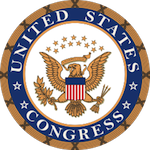 Sen. Bob Casey (D-PA) introduced the United States Semiquincentennial Commission Act of 2016 (S. 2815). This bill is the same as H.R. 4875 introduced in the House by Rep. Patrick Meehan (R-PA) in March. Both bills seek to create a commission to celebrate the nation’s 250th birthday in 2026 similar to the bicentennial celebration of 1976. See last month’s legislative report for more information. It is common for bills like this to be introduced in both chambers hoping one will be passed.
Sen. Bob Casey (D-PA) introduced the United States Semiquincentennial Commission Act of 2016 (S. 2815). This bill is the same as H.R. 4875 introduced in the House by Rep. Patrick Meehan (R-PA) in March. Both bills seek to create a commission to celebrate the nation’s 250th birthday in 2026 similar to the bicentennial celebration of 1976. See last month’s legislative report for more information. It is common for bills like this to be introduced in both chambers hoping one will be passed.
H.R. 4875 can be found at https://www.govtrack.us/congress/bills/114/hr4875.
S. 2815 can be found at https://www.govtrack.us/congress/bills/114/s2815.
S. 2890: A bill to require the Secretary of the Treasury to mint coins in recognition of Christa McAuliffe
This bill can be tracked at https://www.govtrack.us/congress/bills/114/s2890.
H.R. 2722: Breast Cancer Awareness Commemorative Coin Act
Read the about the new law at https://www.govtrack.us/congress/bills/114/hr2722.
Summary of the Breast Cancer Awareness Commemorative Coin Act
- Commemorative coins issued in 2018
- Design, emblematic of the fight against breast cancer, selected from a juried competition with no less than $5,000 going to winning design
- “The Secretary shall encourage three-dimensional designs to be submitted as part of the proposals”
- 50,000 $5 “pink gold” coins with an alloy of at least 75-percent gold with a $35 surcharge
- 400,000 one-ounce silver dollars made with not less than 90-percent silver with a $10 surcharge
- 750,000 clad half-dollar coins with a $5 surcharge
- Surcharges will be distributed to the Breast Cancer Research Foundation of New York, to further breast cancer research funded by the Foundation.





